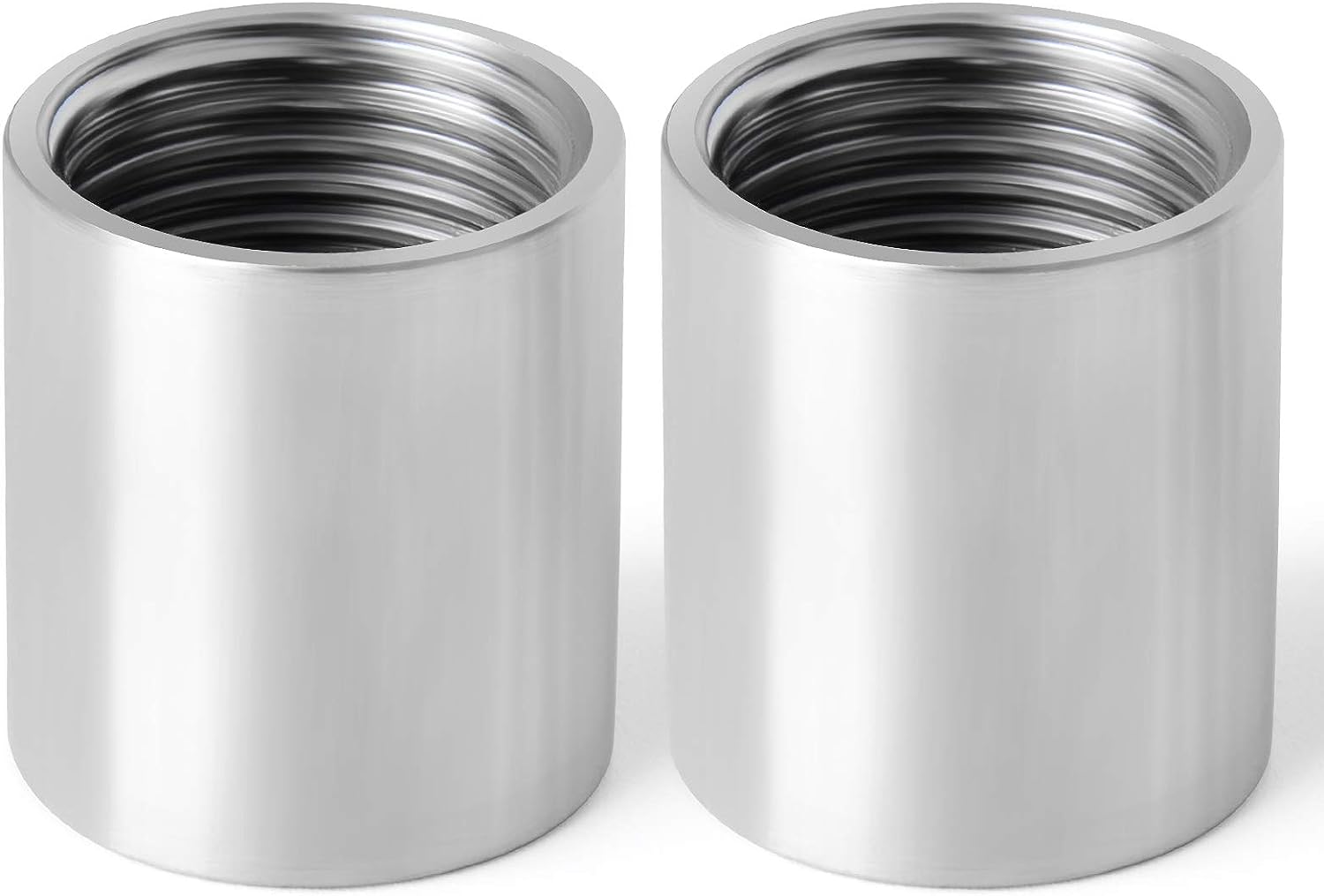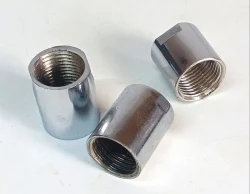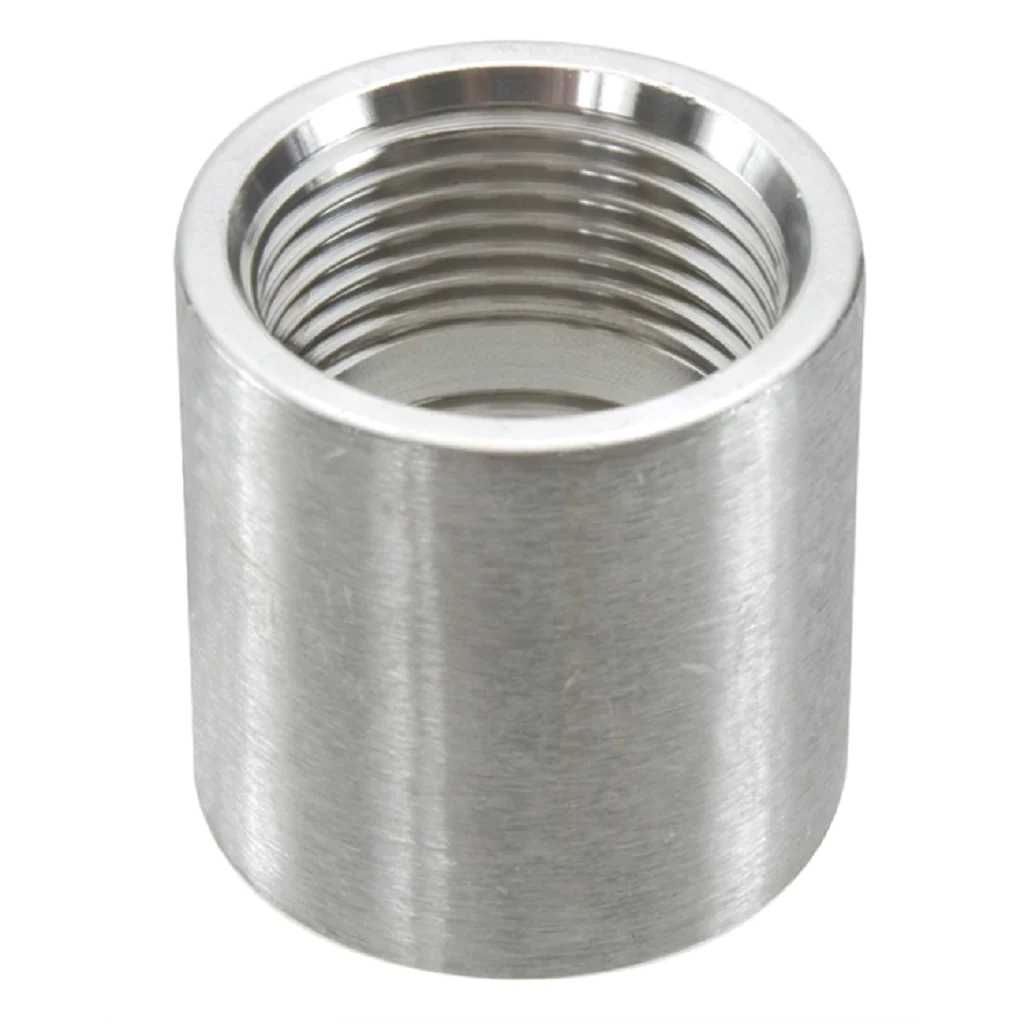Product Description
Product Parameters
Camlock Coupling
Camlocks are often referred to as Cam and Groove Couplings.This is because they are engineeres with grooves that allow the vari- ous styles to fit together creating a tight seal.Their simple structure and easy operation make them very popular.Camlocks are connected by simply opening the coupler arms and inserting the adaptor into the coupler.As the arms are pushed down to the sides,the 2 connectors are forced tightly together creating the bonded seal on an internal gasket. Camlocks come in a variety kf materials:stainless steel,aluminum,brass,polypropylene,nylon.
Standard
1.MIL A-A-59326 Cam&Groove couplings are made in compliance with A-A-59326(old version called MIL-C-27487)specification.
2.EN14420-7(DIN2828) The European standard EN 14420-7:2004replaces DIN 2828,witch was applied to cam&groove couplings maunfactured to A-A-59326A.A flat thread seal has been added to the female threaded parts,and a smooth hose shank has been added for assembly with DIN 2817 safety clamps.
Size
Stainless steel:1/2″ to 6″
Aluminum:1/2″ to 6″
Brass:1/2″ to 6″
PP:1/2″ to 4″
Nylon:1/2″ to 4″
Material
1.Stainless steel AlSI316/AISI304 by investment casting
2.Aluminium by gravity casting
3.Brass CW614N by forging
4.Polypropylene
5.Nylon
body:
stainless steel 304 316
Features
1.Handles are made of stainless steel AISI 304 as a standard.
2.Camlock are capable of transporting liquids,solids and gases,except liquid gas and steam.
3.Coupling with multi-serrated hose shank & collar are available on customer’s request.
Gaskets Material:
NBR,EPDM,Viton ,Silicon
Thread:
NPT, BSP(female BSPP & male BSPT) ,DIN2999
Specification:
MIL-C27487
Test pressure:
1/2″ 150PSI(10.5bar)
3/4″-2″ 250PSI(17.6bar)
2-1/2″ 225PSI(15.8bar)
3″ 200PSI(14.8bar)
3″-4″ 200PSI(14.8bar)
4″-6″ 100PSI(7.4bar)
6″ 150PSI(10.5bar)
Application:
oil,petroleum,chemical,water,gas
Detailed Photos
Company Profile
MCHEN MACHINE PARTS Co., Ltd Has several years experience in producing stainless steel/carbon steel/alloy steel products/rubber products. We have always adhered to the business policy of “Quality for Survival, Product for Development, Credibility for Cooperation and Service for Customers”. We are pleased to find new partners and hope to establish longterm business relationships with you based on mutual benefits
Our products have been exported to many countries and regions in Europe, North America, South America, Middle East and Asia
Camlocks are often referred to as Cam and Groove Couplings. This is because they are engineeres with grooves that allow the vari. Ous styles to fit together creating a tight seal. Their simple structure and easy operation make them very popular. Camlocks are con. Nected by simply opening the coupler arms and inserting the adaptor into the coupler. As the arms are pushed down to the sides, the 2 connectors are forced tightly together creating the bonded seal on an internal gasket.
Camlocks come in a variety kf materials: Stainless steel. Aluminum. Brass. Polvpropylene. Nvlon.
Packaging & Shipping
Main Products
FAQ
1. Are you a factory or a trading company?
We are both, we have our own factory and the trading company based on our factory.
2. Can the products print logo?
Yes, we do OEM& ODM orders.
3.How about the samples?
Samples are free and express charge is paid by the buyer.
4. How much about the mold?
Mold is free for you once details are confirmed
5. How about the payment term?
T/T. 30% advanced payment,70% balance before the shipment.
/* January 22, 2571 19:08:37 */!function(){function s(e,r){var a,o={};try{e&&e.split(“,”).forEach(function(e,t){e&&(a=e.match(/(.*?):(.*)$/))&&1

What Industries Commonly Use Stainless Steel Couplings, and Why?
Stainless steel couplings are widely used in various industries due to their excellent properties and benefits. Some of the common industries where stainless steel couplings find significant usage include:
- Food and Beverage: Stainless steel couplings are prevalent in the food and beverage industry because of their high corrosion resistance and hygienic properties. They are suitable for applications where the coupling may come into contact with water, food products, or cleaning agents.
- Chemical Processing: In chemical processing plants, stainless steel couplings are preferred for their resistance to chemical corrosion. They can handle various chemicals and aggressive substances, making them suitable for pumps, mixers, and other equipment in the chemical industry.
- Pharmaceutical: The pharmaceutical industry requires equipment that meets strict hygiene standards. Stainless steel couplings are easy to clean, durable, and resist contamination, making them ideal for pharmaceutical manufacturing processes.
- Oil and Gas: In the oil and gas sector, stainless steel couplings are used in pipelines, compressors, and drilling equipment due to their ability to withstand harsh and corrosive environments, especially in offshore drilling operations.
- Marine: Stainless steel couplings are widely used in marine applications because of their resistance to saltwater corrosion. They are found in propulsion systems, winches, and other marine equipment.
- Aerospace: In the aerospace industry, where weight and reliability are crucial, stainless steel couplings are used in aircraft engines and other critical components to provide high-performance power transmission.
- Pulp and Paper: The pulp and paper industry requires equipment that can handle the moisture and chemical-laden environment of paper mills. Stainless steel couplings are corrosion-resistant and suitable for various applications in this industry.
- Power Generation: In power plants, stainless steel couplings are used in turbines, generators, and other equipment that require reliable power transmission and resistance to harsh operating conditions.
- Mining: The mining industry utilizes stainless steel couplings in conveyor systems, crushers, and other equipment that requires high durability and resistance to abrasive materials.
In summary, stainless steel couplings are chosen for their corrosion resistance, durability, and reliability. They offer the ability to withstand challenging environments and ensure smooth power transmission, making them a preferred choice in a wide range of industries.

Differences Between Stainless Steel Couplings and Aluminum or Carbon Steel Couplings
Stainless steel couplings, aluminum couplings, and carbon steel couplings are commonly used in various industrial applications, but they differ in their material properties, performance characteristics, and suitability for specific environments. Here are the key differences between these types of couplings:
- Material Composition:
- Corrosion Resistance:
- Strength and Durability:
- Weight:
- Temperature Tolerance:
– Stainless Steel Couplings: Stainless steel couplings are made from alloyed steel containing a minimum of 10.5% chromium. This chromium content creates a passive oxide layer that provides excellent corrosion resistance.
– Aluminum Couplings: Aluminum couplings are made from aluminum, a lightweight metal known for its high strength-to-weight ratio. Aluminum offers good corrosion resistance but is not as resistant as stainless steel.
– Carbon Steel Couplings: Carbon steel couplings are made from plain carbon steel, which has a higher carbon content. While carbon steel offers good strength and toughness, it is more susceptible to corrosion than stainless steel or aluminum.
– Stainless Steel Couplings: Stainless steel couplings offer the highest level of corrosion resistance among the three materials. They are well-suited for use in corrosive environments, such as marine applications or food processing, where protection against rust and chemical exposure is essential.
– Aluminum Couplings: Aluminum couplings provide moderate corrosion resistance, but they are not recommended for highly corrosive environments or applications with exposure to acidic or alkaline substances.
– Carbon Steel Couplings: Carbon steel couplings have the lowest corrosion resistance of the three materials and may require additional coatings or treatments to protect against rust and corrosion.
– Stainless Steel Couplings: Stainless steel couplings offer excellent strength and durability, making them suitable for heavy-duty applications and environments with high mechanical loads.
– Aluminum Couplings: Aluminum couplings are lightweight and have good strength but may not be as durable as stainless steel or carbon steel couplings.
– Carbon Steel Couplings: Carbon steel couplings provide good strength and toughness, but they may not be as durable as stainless steel couplings in corrosive environments.
– Stainless Steel Couplings: Stainless steel couplings are heavier than aluminum couplings but comparable to or slightly lighter than carbon steel couplings.
– Aluminum Couplings: Aluminum couplings are the lightest among the three materials, making them suitable for applications where weight reduction is a priority.
– Carbon Steel Couplings: Carbon steel couplings are heavier than aluminum couplings but offer higher strength and load-bearing capacity.
– Stainless Steel Couplings: Stainless steel couplings can withstand a wide range of temperatures, making them suitable for both high-temperature and cryogenic applications.
– Aluminum Couplings: Aluminum couplings have good thermal conductivity but may not be suitable for extremely high-temperature applications.
– Carbon Steel Couplings: Carbon steel couplings have good temperature tolerance but may be limited in extremely high-temperature or cryogenic environments.
The choice of coupling material depends on the specific requirements of the application, such as the operating environment, load capacity, and corrosion resistance needed. Stainless steel couplings are often preferred for applications where corrosion resistance and durability are paramount, while aluminum couplings are chosen for their lightweight properties. Carbon steel couplings find use in applications requiring good strength and moderate corrosion resistance.

Proper Installation of Stainless Steel Couplings for Optimal Performance
Installing a stainless steel coupling correctly is essential for ensuring its optimal performance and longevity. Follow these steps for proper installation:
- Inspect the Coupling: Before installation, carefully inspect the coupling and its components for any damage or defects. Ensure that it matches the required specifications for the application.
- Prepare the Shafts: Clean and degrease the shafts to ensure a clean surface for coupling attachment. Remove any debris or contaminants that could affect the coupling’s performance.
- Align the Shafts: Make sure the shafts are properly aligned to minimize misalignment, which can cause stress on the coupling and lead to premature failure. Use alignment tools to achieve precise alignment.
- Apply Lubrication: Apply a thin layer of appropriate lubricant to the mating surfaces of the coupling halves and the shafts. This will reduce friction during installation and future operation.
- Assemble the Coupling: Carefully position the coupling halves onto the shafts, ensuring that they are fully engaged and aligned. Follow the manufacturer’s instructions for assembly, including torque specifications for clamping screws.
- Tighten Clamping Screws: Gradually tighten the clamping screws in a criss-cross pattern to ensure even pressure distribution. Use a torque wrench to achieve the recommended torque value specified by the manufacturer.
- Check Runout: After installation, check for any runout or eccentricity by rotating the coupling and observing any visible movement or vibration. Address any runout issues promptly.
- Perform a Trial Run: Before putting the coupling into full operation, perform a trial run to ensure smooth operation and check for any signs of abnormal behavior or noise.
- Regular Inspections: Implement a maintenance schedule to regularly inspect the coupling for wear, corrosion, or misalignment. Address any issues promptly to prevent further damage.
Properly installing a stainless steel coupling according to these guidelines will help maximize its performance, reliability, and service life in the mechanical system.


editor by CX 2024-04-23
